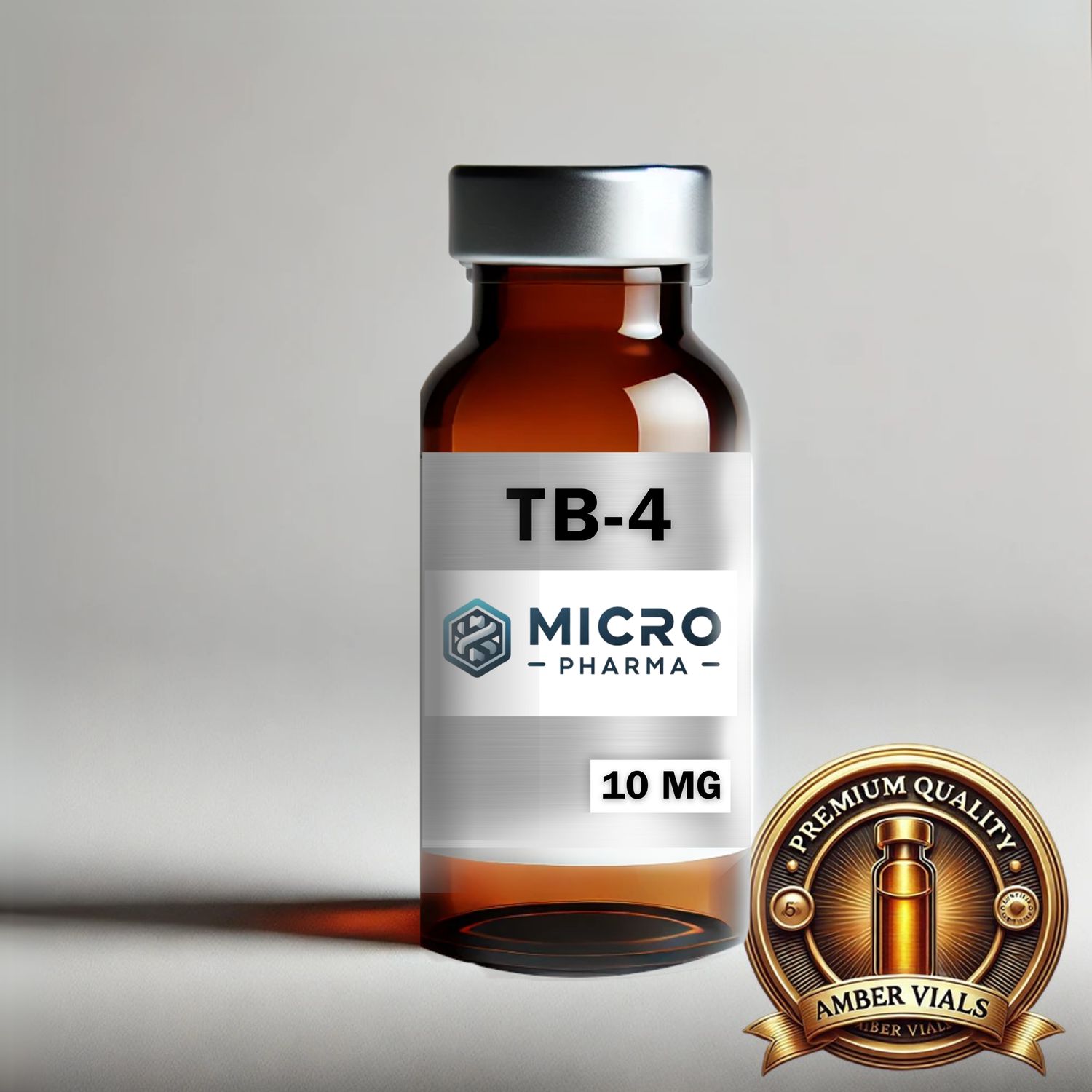Gain Access to Special Bulk Pricing with a Wholesale Account
🟤TB-4 | 10mg 🏆 Amber Edition
$159.99
Bulk pricing available for quantities of 10 units or more
In stock: 60 available
1
Buy more, save more
| Quantity | Price per item | Discount |
| 10 items | $143.99 | 10% off |
| 50 items | $127.99 | 20% off |
Save this product for later
🟤TB-4 | 10mg 🏆 Amber Edition
Product Details
Brand: MicroPharma.us

TB-4 AMBER EDITION
| Unit Size | 10mg/vial |
| Unit Quantity | 1 Amber Vial |
| Molecular Formula | C₁₉₉H₃₂₄N₅₆O₆₁S |
| Molecular Weight | 889.0 |
| Sequence |
SDKPDMAEIEKFDKSKLKKTETQEKNPLPSKETIEQEKQAGES |
| Appearance | White Powder |
| Peptide Purity | >98.1% |
| Solubility | Soluble in water or 1% acetic acid |
Thymosin Beta Peptide is a 43-amino acid polypeptide that functions primarily as a G-actin sequestering molecule, regulating actin polymerization by binding monomeric actin in a 1:1 stoichiometric ratio. This sequestration maintains the intracellular pool of unpolymerized actin and modulates cytoskeletal organization, indirectly influencing processes such as cell migration and adhesion through its control over actin filament dynamics. It is involved in actin treadmilling by interacting with actin-associated proteins such as profilin and cofilin. It plays a role in controlling the availability of actin for the Arp2/3 complex and formins.
Thymosin Beta-4 activity is linked to the regulation of Rho family GTPases, including RhoA, Rac1, and Cdc42, which coordinate cytoskeletal reorganization, lamellipodia, and filopodia extension. It also indirectly impacts PI3K/Akt and MAPK/ERK signaling cascades via feedback from focal adhesion and cytoskeletal tension pathways. Nuclear localization has been observed under certain experimental conditions, suggesting possible involvement in chromatin accessibility or transcriptional regulation, although this function remains incompletely characterized.
The peptide exhibits redox sensitivity due to the presence of methionine and cysteine residues, which can undergo oxidative modifications that alter its binding behavior and functional activity. Protein interactions beyond actin include potential binding to scaffolding proteins involved in integrin-linked kinase complexes and 14-3-3 domains, depending on the cellular context and phosphorylation state.
Powered by Lightspeed
Display prices in:USD

